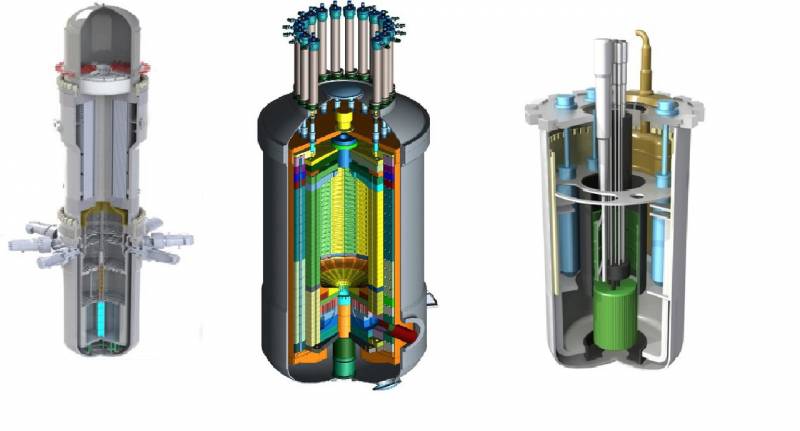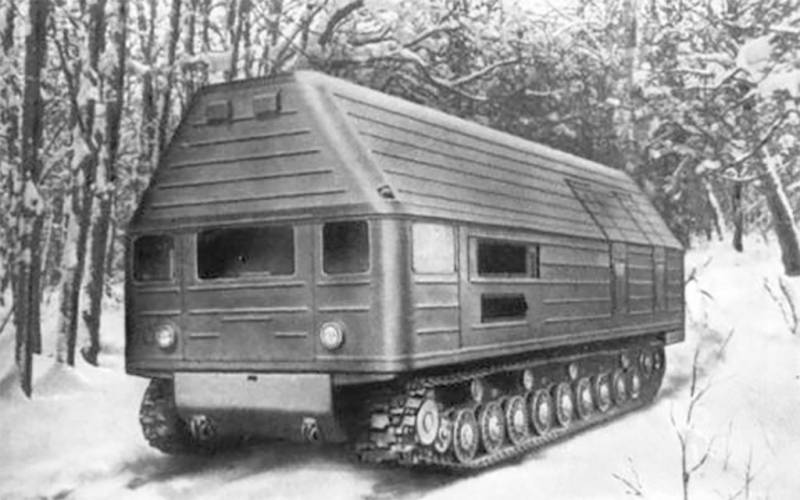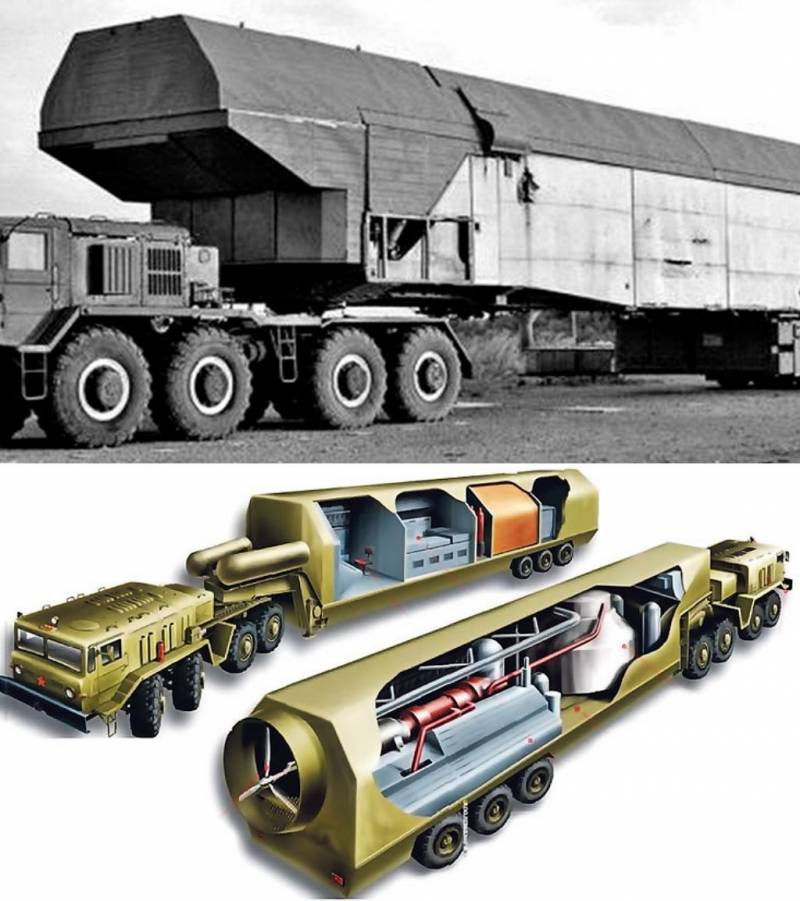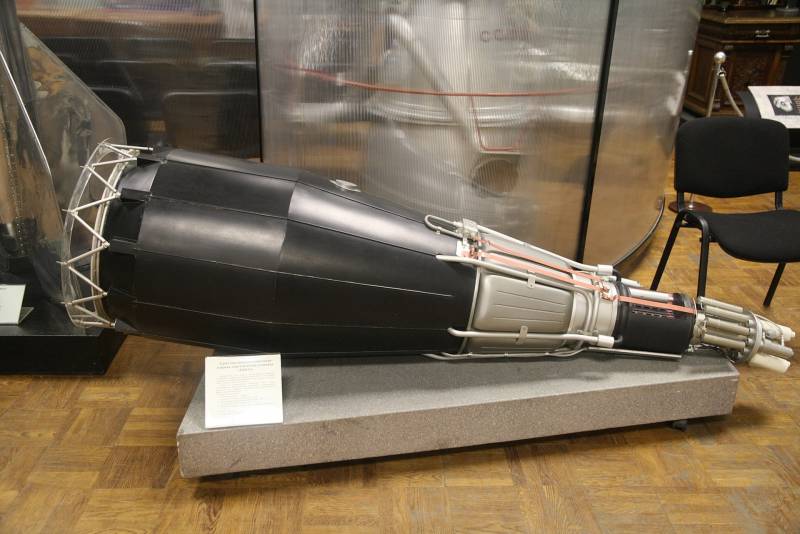Option for the military: low-power nuclear power plants

Schemes of promising micro-nuclear power plants - pressurized water, helium, fast neutron reactor. Source: atomic-energy.ru
Small forms of nuclear power plant
Domestic engineers did not start developing low-power nuclear power plants yesterday or even the day before yesterday. If you delve into history nuclear engineering, then at the end of the 50s you can find a unique project TES-3. This is a caterpillar self-propelled energy vehicle designed for remote areas of the Soviet Union.
The mobile nuclear power plant produced up to 1 kW, consisted of four chassis tank T-10: on the first one, a water-cooled reactor was mounted, on the second, a steam generator, on the third, a turbogenerator, and on the fourth, a control module. The weight of the unique complex was 310 tons, the autonomy was up to 250 days, and it was the first experience of this kind in the world. The experimental setup worked from 1961 to 1965 with virtually no breakdowns, which confirmed the promise of this direction.
The next step was the Pamir-630D, the development of which started in 1965, but the prototypes were assembled only in 1985. Engineers tested a single-loop reactor with a coolant based on dinitrogen tetroxide on a mobile unit, which predetermined the complexity of the design. It was assumed that, unlike the caterpillar chassis, the wheelbase of the MAZ would allow moving along the roads of public infrastructure. If not for Chernobyl and the phobias associated with it, the Pamir could have been brought to mind and put into general use.

One of the machines of the TES-3 complex
In the 60s they experimented with mobile nuclear power plants in the United States. In particular, they built an experimental ML-1 for the needs of the Pentagon. Unlike Soviet technology, the installation was packed in four shipping containers and tried to be adapted for air transport. Everything was done in six blocks, but the output power was lower than the design, and the project was closed.
The topic of mobile nuclear power plants is extensive and interesting, if readers have an interest in this story, then it is quite possible to delve into the technical features of pilot projects.

Product "Pamir-630D"
Much larger than mobile land platforms are floating nuclear power plants, for example, the Russian project Akademik Lomonosov. In 2019, Akademik provided the first electricity to the town of Pevek in the Chukotka Autonomous Okrug. The ship has two pressurized water reactors with a capacity of up to 70 MW and the option of seawater desalination. Estimated service life - up to 40 years.
In the future, optimized floating OPEB units with a capacity of 100 MW will appear, which are smaller in size compared to the Akademik Lomonosov and in the final cost. But these projects are good for the coastal areas of the Far North, especially those adjacent to the Northern Sea Route.
And what about objects of strategic importance remote from the "mainland"?
Non-peaceful nuclear power plants
Power supply of remote facilities of the Russian Ministry of Defense is one of the priority tasks of military development. The Arctic is not going anywhere from us, but there will be more and more encroachments on it by NATO every year. You can, of course, import coal and fuel oil in the old fashioned way, but it is much more efficient (and more effective) to install a small nuclear power plant. The only negative is that in the event of war, the destruction of the reactor can cause a small environmental disaster. It is enough to look at the passions around the Zaporozhye NPP to understand all the nuances of the military use of the civilian atom.
At one time, the Ministry of Defense launched the Grom-2016 research project, the purpose of which was to estimate the cost of power supply for army facilities in the far North. We are talking about units stationed on Wrangel Island, the archipelagos of Novaya Zemlya, Severnaya Zemlya, Franz Josef, the New Siberian Islands and Cape Schmidt. A floating nuclear power plant like the Akademik Lomonosov can be fitted to each base, but it is expensive, and the power of the ship's reactors is excessive.
Over time, the results of the study were supposed to be extrapolated to objects in the depths of Russian territory. The required electric power for each military facility does not exceed 1,0–2,0 MW, which is several times less than the operating and even planned floating nuclear power plants.
It should be noted that the authors of the project from the St. Petersburg Research Institute of Military System Research of the Logistics of the RF Armed Forces have chosen the scheme of thermionic nuclear power plants as a priority. For reference, such devices are used to power spacecraft, they are compact, but also quite expensive.
Russia has mastered the production of small-sized thermionic nuclear power plants of the Buk and Topaz types, producing from 2,5 to 7 kW. The weight varies depending on the version within 900–1 kg, and the resource is scanty - no more than a year. It is supposed to develop a prototype of a thermionic nuclear power plant, located in a concrete shaft with a diameter of 000 meters, a depth of about a meter and covered with a removable cap on top. Such a compact reactor should produce at least 0,42 kW of electricity and serve for about 100 years.
The cost of one "mine"-based nuclear power plant is about a billion rubles. The total development costs only on paper exceed eight billion rubles. However, this is only one of the options provided - other types of products appeared in the final report.
A plant with a classic turbogenerator was ten times more powerful and three times more expensive. The estimated development cost is about 8,6 billion. Military engineers propose to take as a basis the developments of the 60-80s, including the TPP-3 and Pamir-630D mentioned above. Each module of a small-scale nuclear power plant should not be longer than 16 m, wider than 3,2 m and higher than 4 meters. The mass is declared within 120 tons.
Interestingly, the report mentions a special “task of remote monitoring and control of the state of the object with the possibility of its liquidation in the event of an imminent threat of capture by the enemy.”

Nuclear reactor - Converter "Topaz". There is a proposal to use the developments under this project to supply power to remote military garrisons. Source: wikipedia.org
No matter how fantastic the scientific developments of the military look, they have quite tangible ground under them. This is already being done abroad. The Americans are working on the Delithium program, which includes several projects. The smallest is the E-Vinci series from Westinghouse. Requirements for nuclear power plants - more than eight years of autonomous operation, installation at the facility in 30 days, generation of heat and electricity with a total capacity of 5 MW to 13 MW. One module of such a miracle installation should fit in a standard container and weigh no more than 40 tons.
The first prototypes are expected by 2025. Work is also underway on the Holos micro-modular nuclear power plant from Filippone and Associates LLC. This unit should be delivered to garrisons remote from the mainland by C-5 and C-17 aircraft.
It is interesting that among the priority goals of building small-sized nuclear power plants is to reduce the loss of army convoys. The logic is as follows - Holos reduces the need for military facilities in liquid fuel, which means there will be fewer burning fuel trucks. According to statistics, in Afghanistan, the Americans lost 0,042 people per convoy, in Iraq - 0,026 people. From an economic point of view, Holos will pay off at the place of deployment no earlier than in 500 days.
The use of small nuclear power plants for military purposes will not fundamentally change the theater of operations, but it can become a powerful incentive for the development of the corresponding civilian direction. As has happened more than once in history.
Information